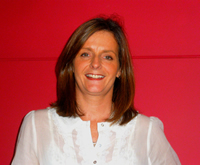I support unemployed residents within East Dunbartonshire to gain the skills required to secure employment, education or training. Referrals come from job centres; mental health organisations; addiction projects and others refer themselves. Initially, I assess what clients ‘can do’ for themselves and identify the support required as some have chaotic lifestyles. A high number feel they lack confidence and suffer from low self esteem.
 Last year, I began a journey of critical reflection of my current work practices. In undertaking this task, I focused on the information I was currently collecting from clients as well as what I needed to gather to capture impact.
Last year, I began a journey of critical reflection of my current work practices. In undertaking this task, I focused on the information I was currently collecting from clients as well as what I needed to gather to capture impact.
Previously the methods I had for recording my work with clients consisted of taking copious notes of each interview detailing our discussion and a Next Steps action plan. Progression for clients was recorded separately. I didn’t focus on gathering feedback on how clients had developed and the impact this had on their life. I started to reflect on what information I was capturing.
When my workplace introduced four weekly CPD sessions based on the CLD competences I identified a need to improve on the Evaluate and Inform Practice competency. I spoke to a colleague who is an Associate Assessor with HMIE who asked: “How do you know you are making a difference?” and “How do you evidence this?” In order to improve procedures, I considered how and when I conduct evaluation with clients. I realized evidencing outcomes and impact was not as simple as coming up with a list of questions on an evaluation form. In order to conduct and improve evaluation with clients, I started to think about creating baseline measurements, constructing individual development plans for clients to reflect on progress and to consider what constitutes an outcome for my clients. I soon realized that this was a lot broader than simply getting people into a job.
Having spent time looking at my own practice and considering what I needed to improve on, I started to develop tools that would allow me to gather the information I needed. Now when new clients access my project, I explain the new process and they are active in creating their own development plans. Throughout regular visits, they reflect on their progress and the distance travelled. Prior to these systems being in place, I knew clients’ lives were enriched in many ways, but could not evidence it. Now I can measure this which means I can build and improve on people’s experiences.
I now capture: what clients have learned; how they have developed, and the impact this has had on their life.
This journey to improve my practice was most definitely a learning curve, however, I feel much more confident in my procedures for gathering feedback. I have robust methods in place to capture clients’ progression. Together we can monitor their individual development plan to record progress, to check we are on track and to identify where things are not working and make any changes necessary.
As not everyone gains employment, they may engage in volunteering which impacts on their social or family lives. Together we now reflect on the impact this opportunity provides to them.
The evidence is now embedded in my daily working practice and is more efficient and effective. Throughout this journey, colleagues were reflecting on their work also and as a result we shared best practice together. This led to my facilitating a CPD training session on my own experience of making evaluation work for me. The process has not always been easy and at times of pressure introducing changes was challenging, however the results have been worth it.
Now, when evaluation is discussed, I feel confident I have a framework in place to capture and measure outcomes and the impact of my work with clients. I can now evidence what difference my work is making as I have made the changes to bring about improvement.
Having undertaken the journey to “Evaluate and Inform Practice” I am a more confident practitioner. This has resulted from the quality systems introduced which greatly improve my ability to capture and measure outcomes and impacts with clients. My clients have also benefited from this process, now they participate in constructing an individual learning plan and have the ability to reflect on the progress they have made.
I am now engaged in a continual process of improvement and development which is embedded into my working practices, benefiting both myself and my clients.
